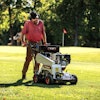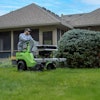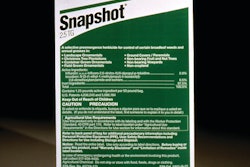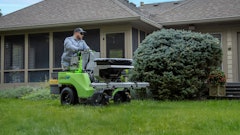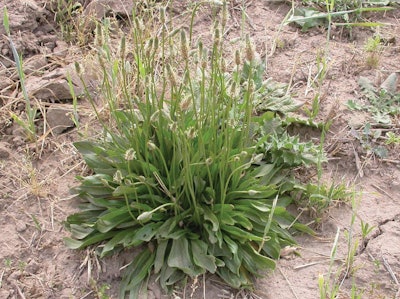
The Buckhorn Plantain (also known as the Plantago lanceolata) is an annual, biennial, or perennial plant. Found throughout California, the Buckhorn Plantain is more tolerant of drought than other plantains. It does take a long time for the weed to establish, and it is typically found in areas like parks or cemeteries with older turf.
Identification
This broadleaf weed forms a rosette of leaves that grow above sturdy lateral branches. The leaves of the Buckhorn Plantain can be described as twisted and curled, narrowly oval and a dark shade of green with sharp tips. They can grow up to 1 1/2 inches wide and 8 inches long. Flower spikes with white flowers occur on leafless flowering stems that grow 12 to 16 inches in height.
According to the University of California Agriculture & Natural Resources Integrated Pest Management Program, the Buckhorn Plantain reproduces by seed. Seeds are oblong and brown with one side rounded and glossy with a light brown stripe.
Tips for prevention and control
Healthy turf – Maintaining a healthy, well-fertilized turf will help to control the Buckhorn Plantain.
Beat the seed – If infected area’s size is manageable, remove established plants with as much of the taproot as possible before they seed and spread.
Postemergence – Postemergence herbicides like Tenacity from Syngenta should be applied in mid spring to early summer and/or mid to late autumn during active growth of the weed. Tenacity removes weeds from established turf and can be also used to prevent weeds from germinating in newly seeded or overseeded turf.
Preemergence – Preemergence herbicides can be applied before seed germination. Dow says its Snapshot specialty herbicide offers proven control of more than 125 species of broadleaf and grassy weeds. It can be applied in early spring prior to germination of target weeds, in late summer to early fall, or immediately after cultivation. It provides up to eight months of control, depending on conditions.
